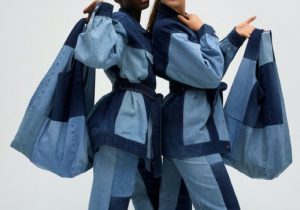Crafting Sustainability: The Art and Practice of Upcycling Garments
In a world where environmental concerns are at the forefront of societal consciousness, the fashion industry is experiencing a transformation. Traditional methods of clothing production often result in immense waste and contribute significantly to environmental degradation. However, a growing movement towards sustainability is reshaping the way we think about fashion, and upcycling garments is emerging as a powerful solution.
Upcycling is the process of transforming discarded or unused materials into new products of higher quality or value. When it comes to garments, upcycling involves repurposing old clothing or textiles to create unique and fashionable pieces. Unlike recycling, which breaks down materials to create new ones, upcycling maintains the integrity of the original materials, giving them new life and purpose. Unlike fast fashion, which often relies on cheap labor and exploitative working conditions, upcycling fosters a more ethical approach to production by prioritizing craftsmanship and artisanal techniques. Many upcycling brands also prioritize transparency and accountability, providing consumers with information about the origins of their materials and the conditions under which their garments are made. By supporting upcycling fashion, consumers can align their purchasing decisions with their values, contributing to a more equitable and sustainable fashion ecosystem.
The Benefits of Upcycling Garments
- Environmental Conservation: By upcycling garments, we reduce the demand for new materials and minimize the amount of waste sent to landfills. The fashion industry is notorious for its high levels of waste, but upcycling offers a sustainable alternative that conserves resources and reduces pollution.
- Creativity and Individuality: Upcycling garments allows for creativity and individual expression. Each piece is unique, showcasing the creativity and ingenuity of the designer. It offers consumers the opportunity to own one-of-a-kind items that reflect their personal style.
- Ethical Fashion: Upcycling promotes ethical fashion by reducing the reliance on cheap labor and exploitative practices often associated with fast fashion. By supporting upcycled garments, consumers can align their fashion choices with their values, contributing to a more ethical and sustainable industry.
- Community Engagement: Upcycling garments can foster community engagement and collaboration. Workshops and events centered around upcycling provide opportunities for people to come together, share skills, and learn from one another. This sense of community strengthens bonds and fosters a collective commitment to sustainability.
Upcycling garments is more than just a creative hobby – it’s a powerful tool for promoting sustainability and reducing waste in the fashion industry. As consumers become increasingly aware of the environmental and social impacts of their clothing choices, upcycling fashion offers a compelling alternative to the status quo. By embracing upcycling, we can transform our wardrobes into statements of sustainability and individuality, while also supporting a more ethical and environmentally conscious fashion industry



